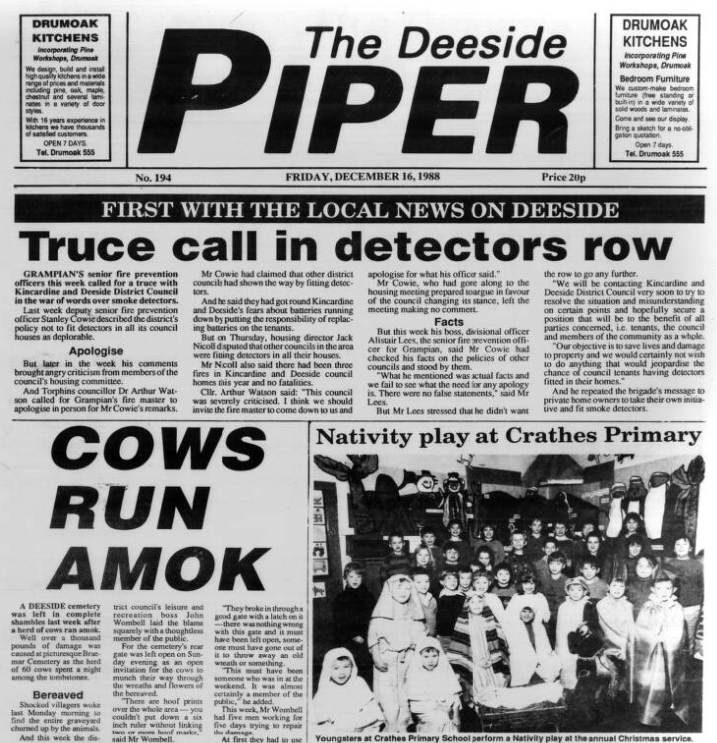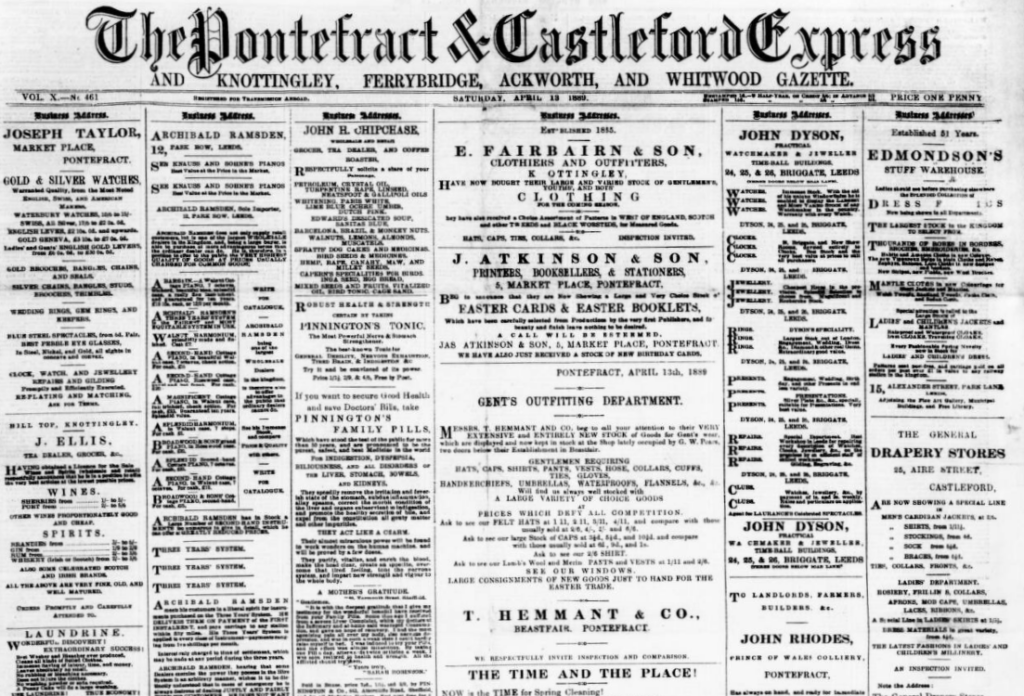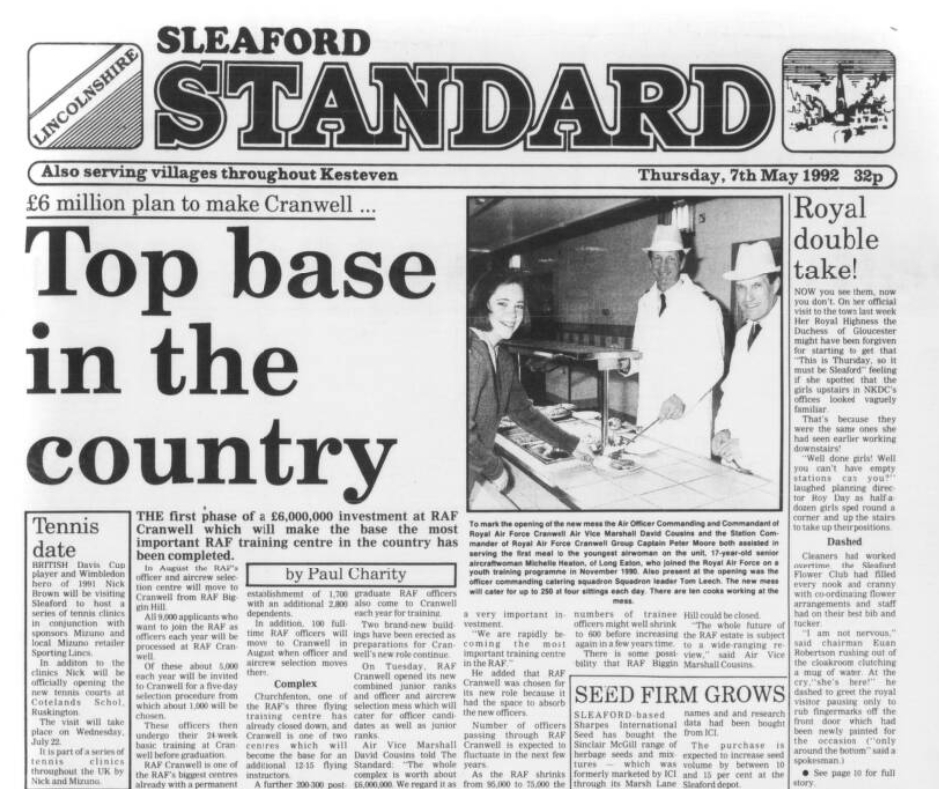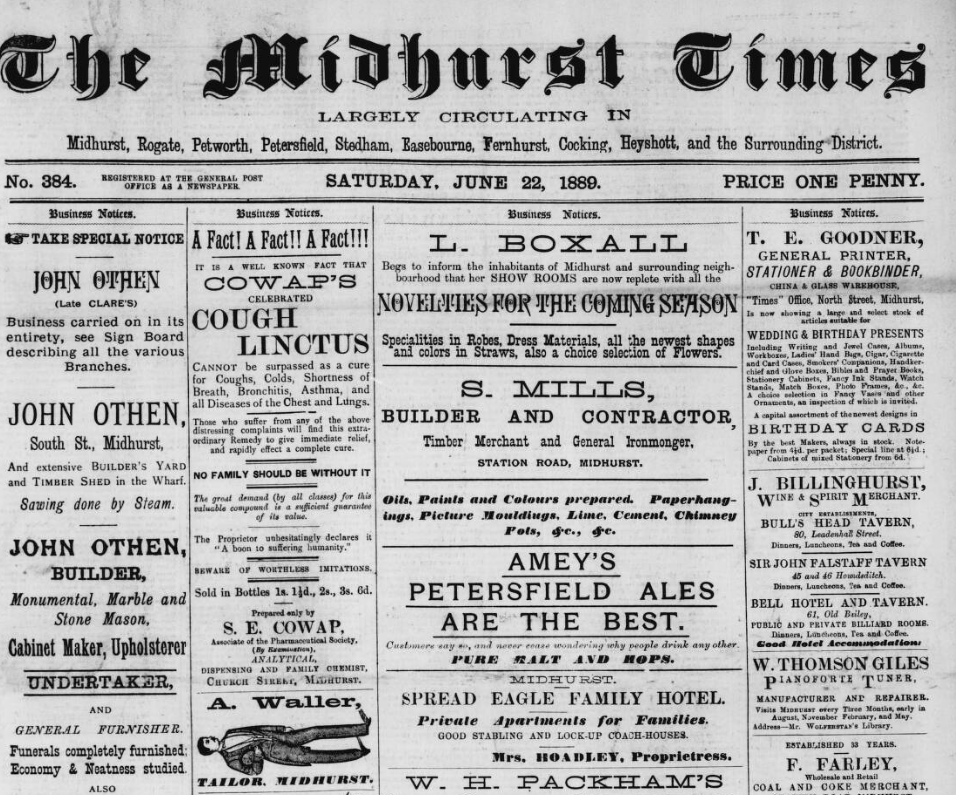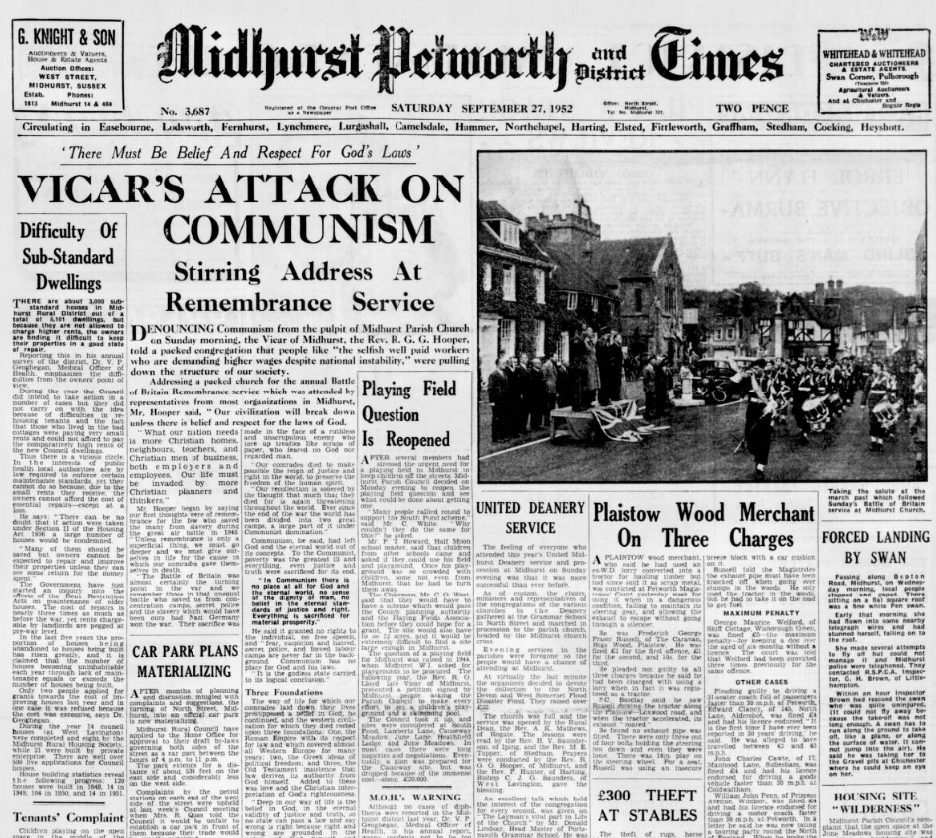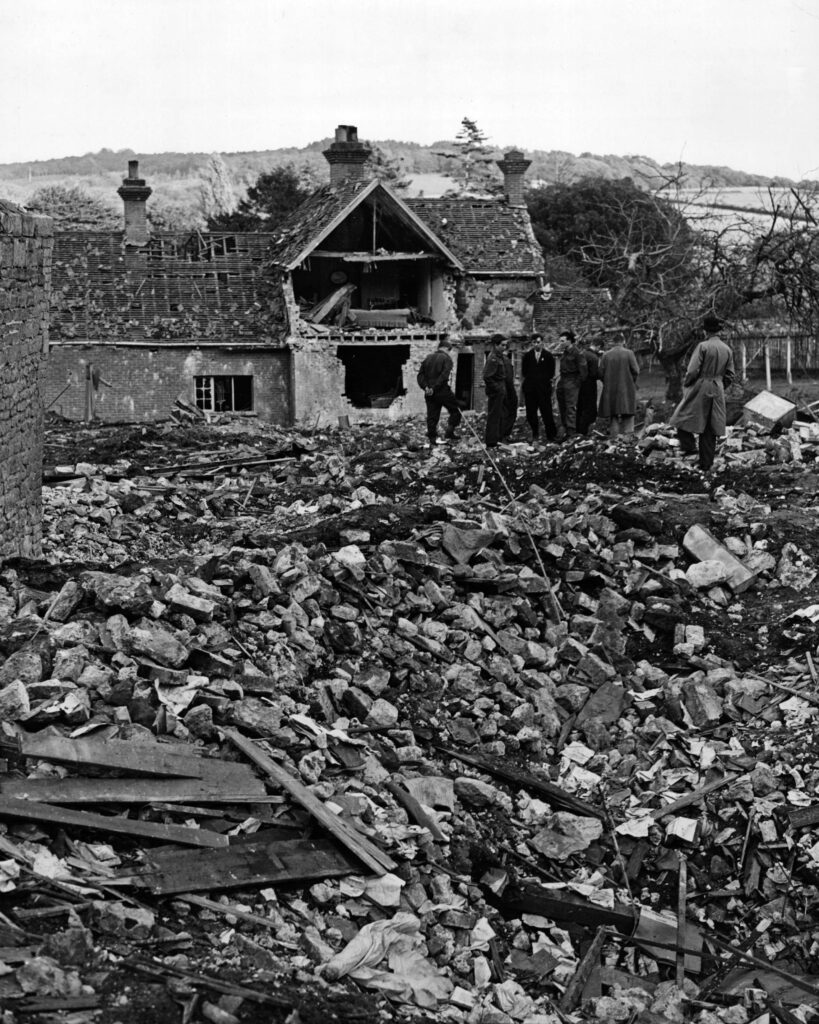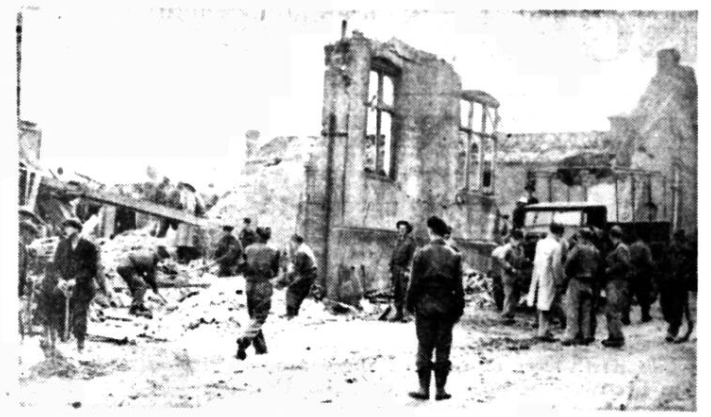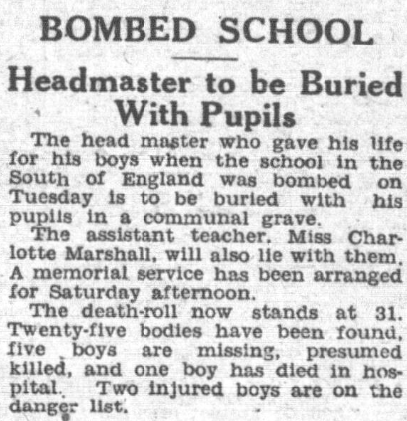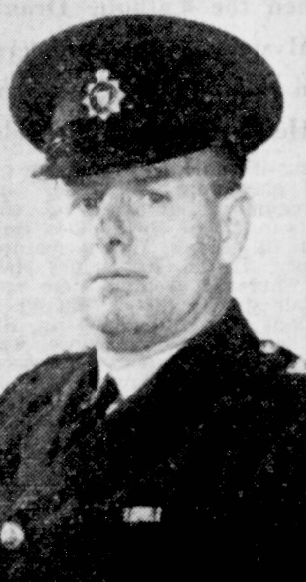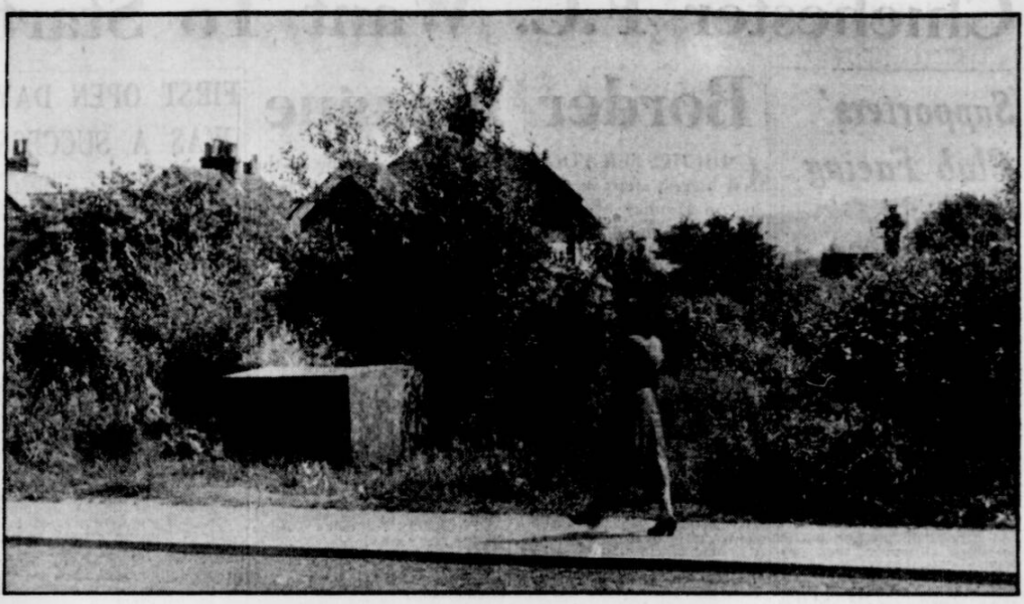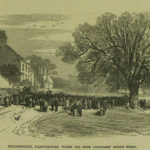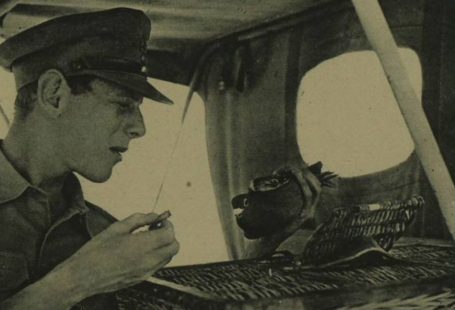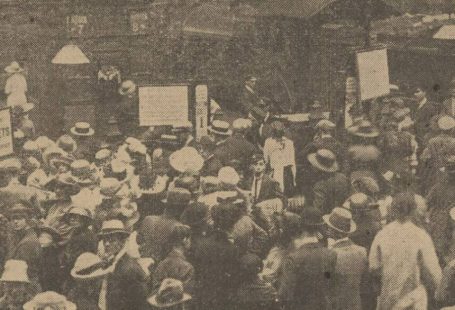This week at The Archive we are proud to announce that we have passed another milestone, that of 76 million pages, which are now all available to search as part of our collection. Meanwhile, we’ve added four brand new titles from Aberdeenshire, Lincolnshire, Sussex and Yorkshire this week, as a total of 261,211 brand new pages have joined us over the last seven days.
As part of our push to hit 76 million pages, we’ve updated 10 of our existing titles from across England and Scotland. So, from Fleetwood to Forfar, from Montrose to Morpeth, from Scarborough to Sussex, discover which of our existing titles welcome updates this week. Meanwhile, using our new Sussex title the Midhurst and Petworth Observer, we delve into a tragic chapter in the history of the market town of Petworth, when one of its schools was bombed during the Second World War.
Register now and explore the Archive
With 76 million pages now on The Archive, leading our charge of new titles this week is the wonderfully named Deeside Piper. A relatively recent arrival on the publishing scene, this Banchory-based newspaper was established in the 1980s to provide ‘all the local news from Deeside and Donside in the form of a weekly newspaper.’
Published every Friday in the Aberdeenshire burgh of Banchory, the Deeside Piper describes itself as a ‘local newspaper with the accent on local news and views.’ Printing an array of photographs and news items from the region, the Deeside Piper remains in print to this day.
The next title helping to make up our 76 million pages milestone is West Yorkshire’s Pontefract & Castleford Express, which was established in the historic market town of Pontefract in 1880. With the full name of the Pontefract & Castleford Express, and Knottingley, Ferrybridge, Ackworth and Whitwood Gazette, this title was a localised edition of the Wakefield Express, and appeared every Saturday at the cost of one penny.
Traditionally Liberal in its politics, the Pontefract & Castleford Express printed mainly local news, printing reports from the likes of the Pontefract Petty Sessions, the Pontefract Highway Board, the Pontefract Town Council, as well as from the Wakefield Petty Sessions and the Wakefield Board of Guardians. The newspaper also published useful trade directories, alongside news from home and abroad, reports on local sports matches, and serialised fiction.
Providing ‘trusted news since 1880,’ the Pontefract & Castleford Express is in print to this day, and now appears every Thursday.
We’re in Lincolnshire now for our third new title of the week, which has helped us to reach 76 million pages. We’re delighted to welcome the Sleaford Standard to our collection, which was established in 1924, although the newspaper traces its roots back to the nineteenth century. Published in the Lincolnshire market town of Sleaford, in 1961 the Sleaford Standard absorbed its rival title the Sleaford Gazette, which was established in 1854, itself merging with the Sleaford Journal in 1929 to become the Sleaford Gazette and Journal.
Published every Friday, in the 1960s this newspaper was known by the title of the Sleaford Standard and Sleaford Gazette. At the cost of four pence, the publication featured an array of local news, alongside more special interest features, such as a ‘Pets and Hobbies Club,’ a ‘Motoring Magazine’ section, and a look at ‘Life in the Countryside.’ Indeed, the Sleaford Standard had a particular focus on agriculture, with special sections devoted to the industry.
Also printing extensive notices of births, marriages and deaths, the Sleaford Standard appears to this day, now being published every Wednesday.
Our fourth and final title this week, which has pushed us up to those 76 million pages, is the Midhurst and Petworth Observer. Published in the West Sussex market town of Midhurst since 1882, and part of the Sussex-based Observer series of newspapers, this title began life as the Midhurst Times.
Originally appearing every Saturday at the cost of one penny, the Midhurst Times circulated ‘largely in Midhurst, Rogate, Petworth, Petersfield, Stedham, Easebourne, Fernhurst, Cocking, Heyshott, and the Surrounding District.’ A lively read, the newspaper filled eight pages and reported on the latest news from London, as well as containing reports on international news, the markets, parliament, and court and society.
Providing some more nuanced content, the Midhurst Times published columns entitled ‘Gardening For The Week’ and ‘Gossip on Dress,’ alongside serialised fiction, correspondence, and local news.
Becoming the Midhurst and Petworth Times in 1935 to incorporate more news from the nearby historic market town of Petworth, the title took its present name of the Midhurst and Petworth Observer in 1964. The newspaper still appears to this day, and is now published every Thursday.
That’s it from our new titles of the week, but with 76 million pages and ten updated titles, there’s still so much for you to explore. Over the last seven days we have added over 46,000 brand new pages to the Scarborough Evening News, whilst over 11,000 brand new pages join Haywards Heath title the Mid-Sussex Times. This week also sees significant updates to some of our Scottish titles, with over 15,000 brand new pages joining the Forfar Dispatch, and over 9,000 brand new pages joining the Montrose Review.
The Bombing of Petworth Boys School – September 1942
On 29 September 1942 a lone German Heinkel He 111 bomber dropped three bombs on the rural market town of Petworth, West Sussex, aiming for Petworth House, the town’s large stately home. All three bombs missed, but one bomb bounced off a tree and landed on Petworth Boys’ School, with devastating affects.
That day, 28 boys, alongside the headmaster and assistant head teacher were killed. The tragedy left an indelible mark on the rural community, where evacuees had been sent from Britain’s cities to be protected from such air raids. The impact of the bombing of Petworth Boys’ School can be traced in the pages of our new title the Midhurst and Petworth Observer. Although these new pages come from 1952, a decade after the attack, the tragedy even then feels raw.
For example, the Midhurst and Petworth Observer (or the Midhurst and Petworth Times as it was then) on 23 February 1952 printed an article entitled ‘Petworth War Memorial.’ This piece described how ‘Petworth Rural Council are still at work on the memorial for the communal grave of the masters and boys of the Petworth Boys’ School bombed in 1942.’ The initial design had been turned down by a court in Chichester.
For this new design, the Petworth Rural Council wanted a cross ‘to be placed at the south end of the grave.’ The Midhurst and Petworth Observer described how the memorial was set to be designed by architect Mr J.B.S. Comper for the cost of £620, the below wording to be inscribed ‘on the base of the cross:’
In loving memory of the Head Master, Teacher, and Boys, who lost their lives when Petworth Boys’ School was bombed, 29th September, 1942.
The bombing of Petworth Boys’ School was again remembered a few months later on 3 May 1952 in a report on local Police Inspector, Luther Harry Bourne, who was moving from the Midhurst Sub Division to ‘become an inspector at Horsham.’ Just prior to the outbreak of the Second World War, Bourne ‘was posted to Petworth to supervise A.R.P. work in the division.’ His son Norman attended Petworth Boys’ School, and he was ‘buried alive and injured’ in the aftermath of the bomb attack.
Movingly, Bourne was ‘the first police officer on the scene,’ whilst thankfully ‘his son had already been rescued’ and survived the bombing.
For the inhabitants of Petworth, the tragedy that occurred on 29 September 1942 was a difficult one to forget. A decade later, the site of the former school still remained, a barren reminder of that horrific day. On 14 June 1952 an article was published in the Midhurst and Petworth Observer, which described the bombsite:
Nearly ten years ago, Petworth Boys’ School was bombed and razed to the ground. Most of the rubble was removed, and since then nothing has been done to it. It is an eyesore to the town and gives a bad impression to visitors and tourists, as well as serving a grim and untidy reminder of the tragedy.
The piece seems a little callous in light of the tragedy, as the article asked ‘whose job is it to clear it up – to remove the weeds and tidy the whole site?’ However, the piece concluded that ‘out of respect and remembrance for those who were killed and their surviving relatives, many consider the site should have been cleaned up years ago.’
By the October of 1952, the Midhurst and Petworth Observer was reporting how ‘the question of tidying up Petworth’s bombed site was receiving attention from the old school trustees and work was being done on the site.’ And although the site was cleared away, tidied, the mark of the tragedy remains even to this day on the small Sussex town.
Find out more about the history of Petworth and other market towns, the impact of the Second World War, and much more besides, in the 76 million pages of our newspaper Archive today.
New Titles
| Title | Years Added |
| Deeside Piper | 1986, 1988-1994 |
| Midhurst and Petworth Observer | 1889, 1893, 1952 |
| Pontefract & Castleford Express | 1889, 1901, 1911 |
| Sleaford Standard | 1961-1963, 1988, 1992-1996, 1998 |
Updated Titles
This week we have updated ten of our existing titles.
You can learn more about each of the titles we add to every week by clicking on their names. On each paper’s title page, you can read a FREE sample issue, learn more about our current holdings, and our plans for digitisation.
| Title | Years Added |
| Coventry Graphic | 1911 |
| Fleetwood Weekly News | 1998 |
| Forfar Dispatch | 1959-1984 |
| Gainsborough Evening News | 1960 |
| Market Rasen Weekly Mail | 1986, 1995 |
| Mid Sussex Times | 1982, 1984, 1986, 1989 |
| Montrose Review | 1818, 1839, 1844-1845, 1978-1985 |
| Morpeth Herald | 1965-1970 |
| Ripon Gazette | 1990-1991, 2002 |
| Scarborough Evening News | 1993-1994, 1998, 2000 |
You can keep up to date with all the latest additions by visiting the recently added page. You can even look ahead to see what we’re going to add tomorrow.


